No products in the cart.
FREE Shipping all over India. No minimum cart value required
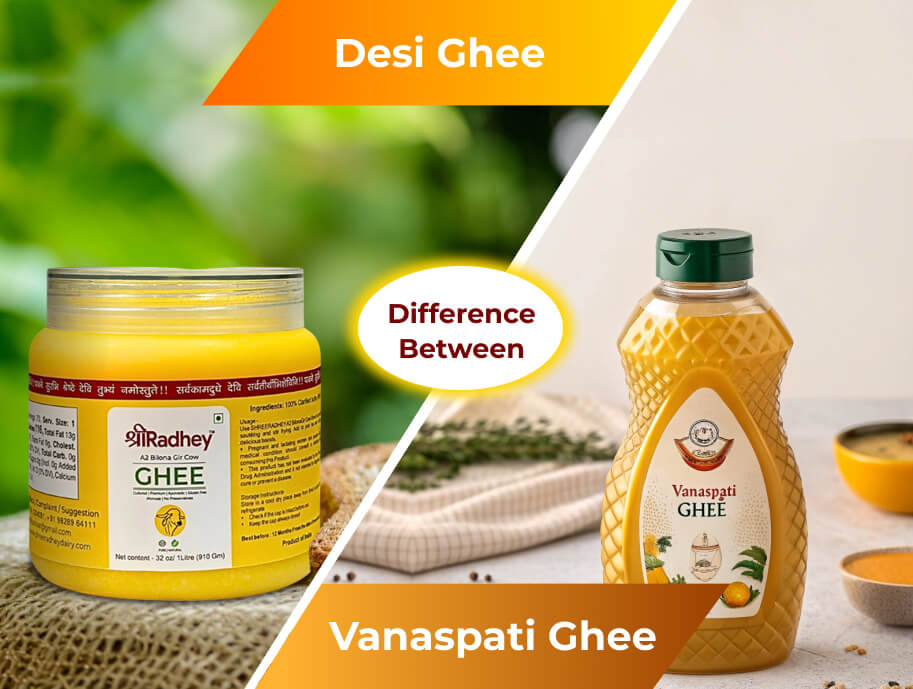
Ghee is a staple in Indian households and is widely used for cooking, religious rituals, and even medicinal purposes. Two commonly available varieties are Vanaspati Ghee and Desi Ghee, but they differ significantly in terms of ingredients, nutritional value, health benefits, and manufacturing process.
In this blog, we will explore the key differences between Vanaspati and Ghee and determine desi ghee vs ghee, which one is the better choice for a healthy lifestyle.
What is Desi Ghee?
Pure Desi Ghee is a natural dairy product made from the milk of cows. The traditional method of making Desi Ghee involves churning butter from curd and then simmering it to remove water content, leaving behind pure golden ghee. This process, known as the Bilona method, retains the essential nutrients and enhances the aroma and flavor of ghee. Desi Ghee is rich in healthy fats, including omega-3 fatty acids, butyric acid, and fat-soluble vitamins like A, D, E, and K. It is known for promoting digestion, boosting immunity, and providing sustained energy.
What is Vanaspati Ghee?
The production process of hydrogenated vegetable oil produces Vanaspati Ghee that mimics Desi Ghee while missing both its authentic ingredient profile and medical advantages. The production of Vanaspati Ghee begins with refined palm oil or vegetable oil which then gets transformed into ghee-like solid consistency through hydrogenation. The manufacturing method consists of pressure-controlled hydrogen gas addition to liquid vegetable oils to produce a stable semi-solid fat. The trans fat content in Vanaspati Ghee differs from Desi Ghee because the fat molecules create adverse health risks for heart health.
Key Differences Between Vanaspati Ghee and Desi Ghee
1. Ingredients and Source
A2 cow desi ghee is made from the milk of cows or buffaloes. The organic desi ghee contains natural nutrients with essential fatty acids.
Vanaspati Ghee is made from hydrogenating palm oil and other vegetable oils. This ghee does not contain dairy elements and undergoes artificial processing to create a ghee-like substance.
2. Nutritional Value
The healthy saturated fats as well as omega-3 fatty acids and fat-soluble vitamins A, D, E, K can be found in Desi Ghee. The vital nutrients found in desi ghee help to function the brain and they support digestion and develop immunity.
The nutritional value of Vanaspati Ghee is inferior because it fails to contain essential nutrients and contains excessive trans fat amounts that present cardiovascular hazards.
3. Health Impact
Desi Ghee is a beneficial source of fat which strengthens digestion with controlled weight management and delivers enduring energy. The consumption of controlled amounts of ghee proves beneficial for the heart structure because it includes butyric acid that enhances gut function. Click to Learn How Desi Cow Ghee is Good for a Healthy Heart.
Consuming Vanaspati Ghee exposes people to dangerous trans fatty acids because these fats create an elevated risk of heart disease together with obesity and diabetes. Continued regular use of vanaspati ghee in blocked arteries and additionally produces various health issues.
4. Taste and Aroma
Desi Ghee shows its natural golden-yellow hue and rich nutty smell as beta-carotene from cow’s milk produces these characteristics. Traditional Indian food receives enhanced flavor because Desi Ghee retains its authentic taste.
The taste profile of Vanaspati Ghee remains plain and it fails to produce the same aromatic qualities as pure ghee. Artificial additives are added to Vanaspati Ghee for achieving better texture alongside an imitation of Desi Ghee’s taste.
5. Cooking and Smoke Point
The high smoke point of Desi Ghee at 250°C enables it to become an excellent choice for heating food along with sautéing and deep-frying without creating damaging compounds. Using Desi Ghee in cooking enhances food quality by adding more nutritional benefits to your food.
Vanaspati Ghee possesses a high smoke point but maintains unhealthiness because of its artificial creation and trans fat composition thus making it unsuitable for regular cooking and prolonged dietary use.
6. Price and Availability
The production methods of Desi Ghee require intensive work while using dairy ingredients in their pure form so it becomes more expensive. It is worthwhile to spend money on Desi Ghee because it delivers both nutritional advantages and health benefits to the consumer.
The widespread availability and low cost of Vanaspati Ghee makes it the common cooking oil for restaurants and bakeries together with commercial kitchens. The low price aspect of this product results in health dangers for consumers.
Which One Should You Choose?
The consumption of ghee brings essential nutrients to your body alongside digestive benefits that strengthen overall health. Regular use of Vanaspati Ghee remains an inferior option because it contains trans fats that create serious health dangers and this ghee maintains a low price point.
Pure and nutritious cooking fat comes from A2 Desi Ghee produced by indigenous milk processing through Bilona methods. High-quality ghee brings maximum health advantages due to its production process. Click to Learn How is A2 Cow Ghee made by using the Bilona Method?
Conclusion
Understanding the difference between Desi Ghee and Vanaspati Ghee is essential for making healthier dietary choices. While both may look similar, their impact on health is vastly different. Desi Ghee, derived from pure dairy sources, is a time-tested superfood with multiple health benefits, whereas Vanaspati Ghee is an artificial alternative that should be avoided due to its high trans fat content. For a healthier lifestyle, choose pure Desi Ghee over Vanaspati Ghee and enjoy its rich flavor, nutritional goodness, and Ayurvedic benefits.




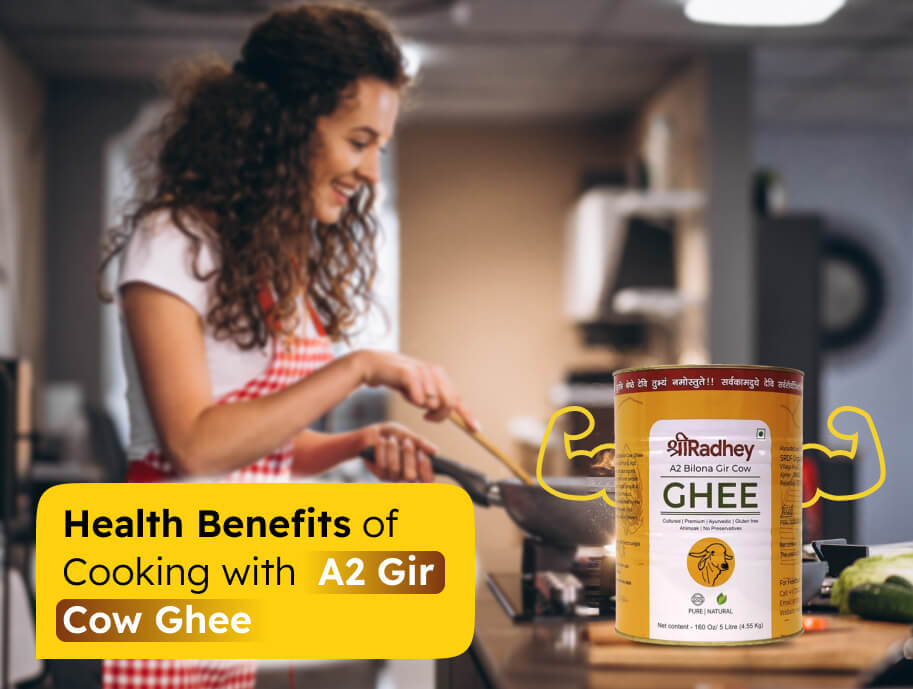 Health Benefits of Cooking with A2 Gir Cow Ghee
Health Benefits of Cooking with A2 Gir Cow Ghee How to Check the Purity of A2 Cow Ghee
How to Check the Purity of A2 Cow Ghee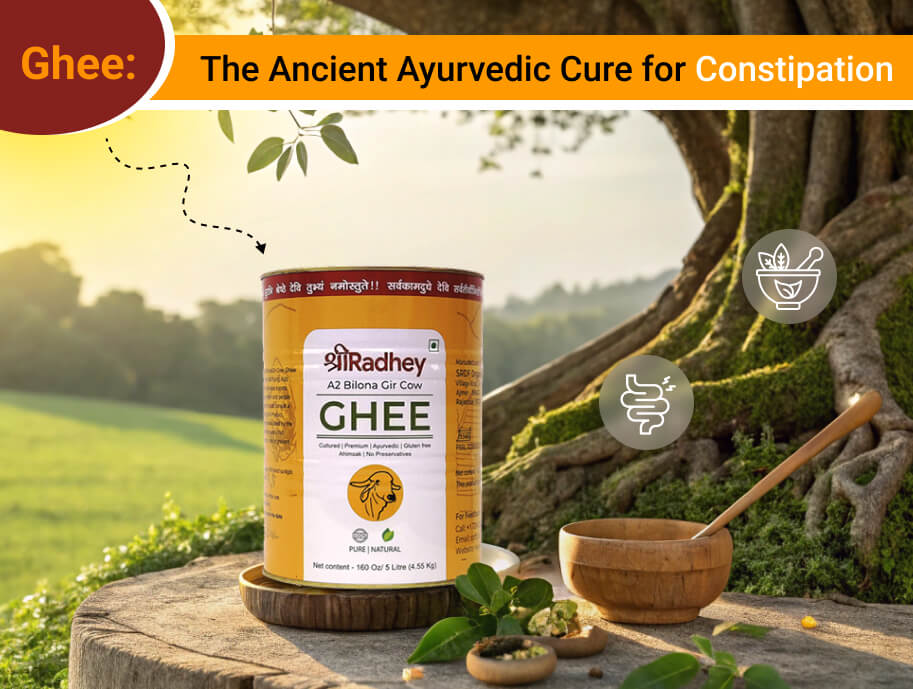 Ghee: The Ancient Ayurvedic Cure for Constipation
Ghee: The Ancient Ayurvedic Cure for Constipation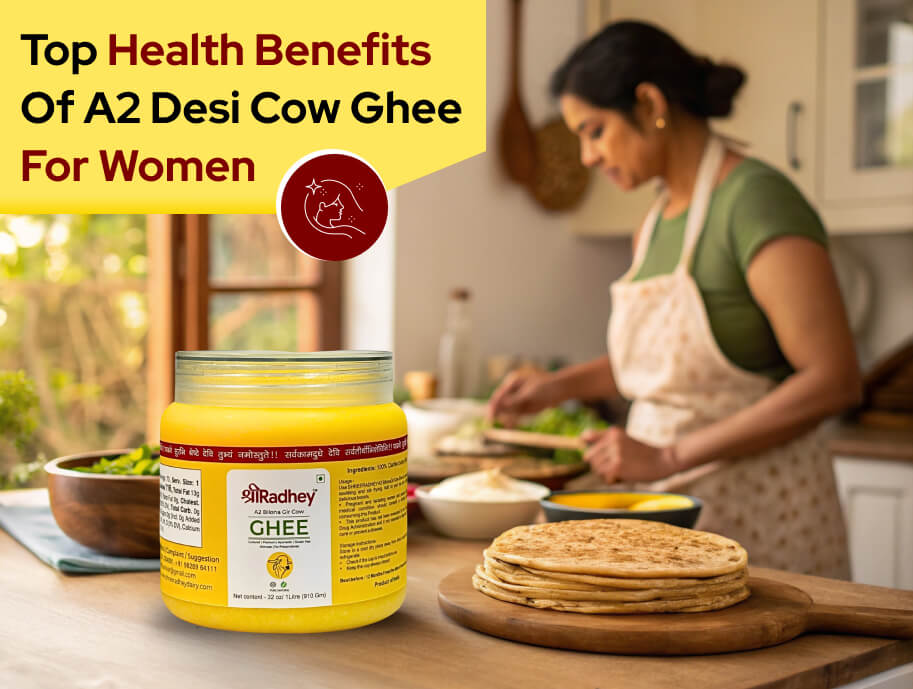 Top Health Benefits of A2 Desi Cow Ghee for Women
Top Health Benefits of A2 Desi Cow Ghee for Women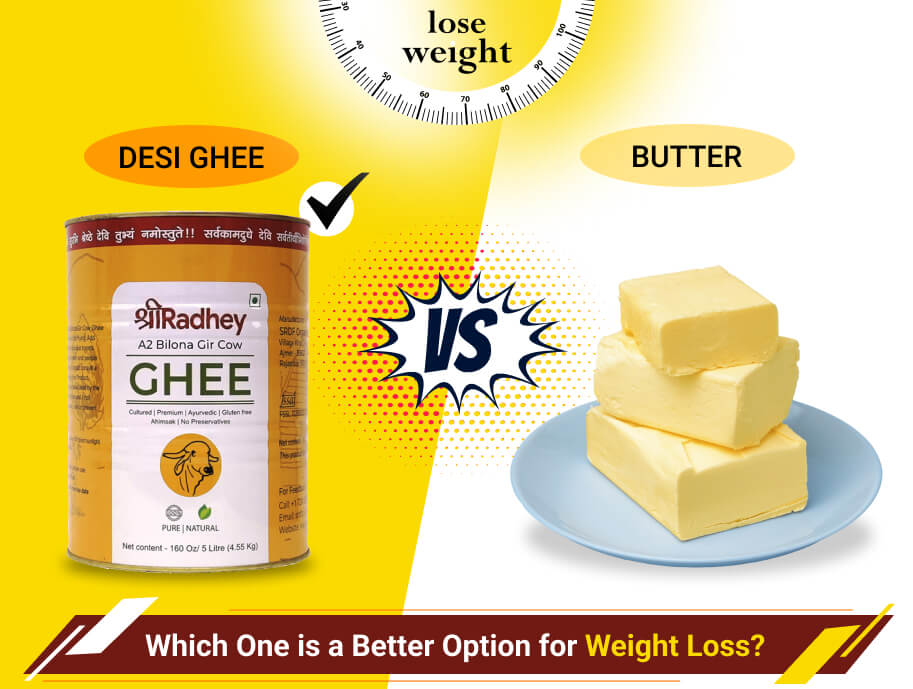 Desi Ghee vs. Butter: Which One is a Better Option for Weight Loss?
Desi Ghee vs. Butter: Which One is a Better Option for Weight Loss?